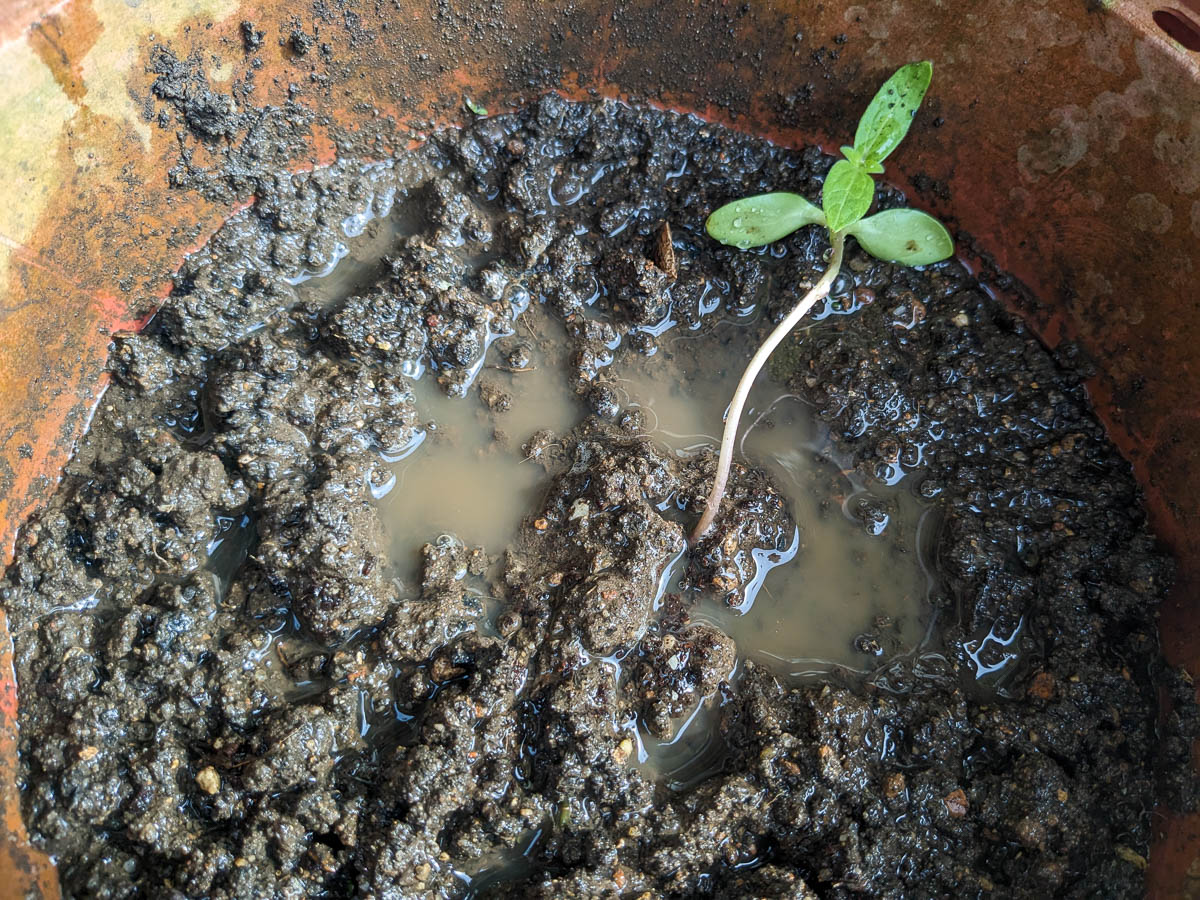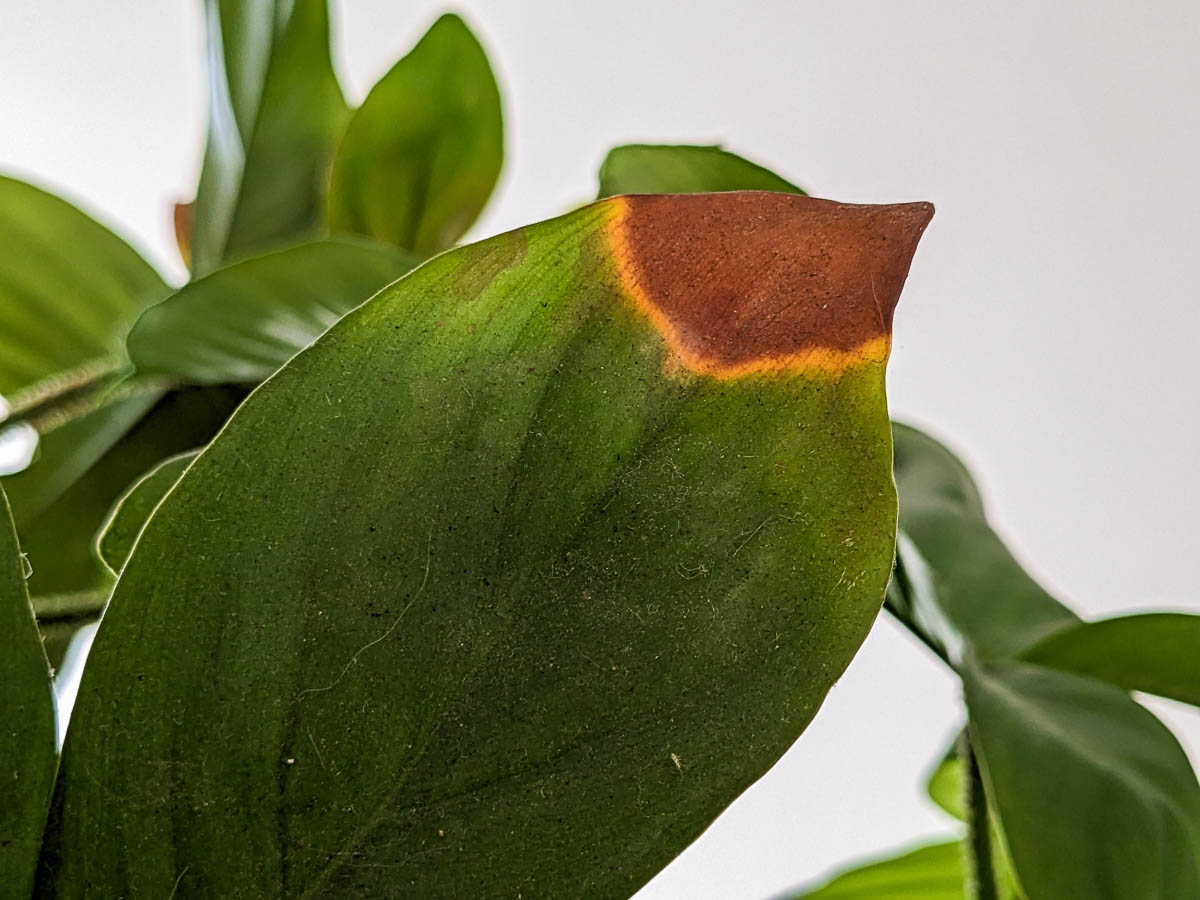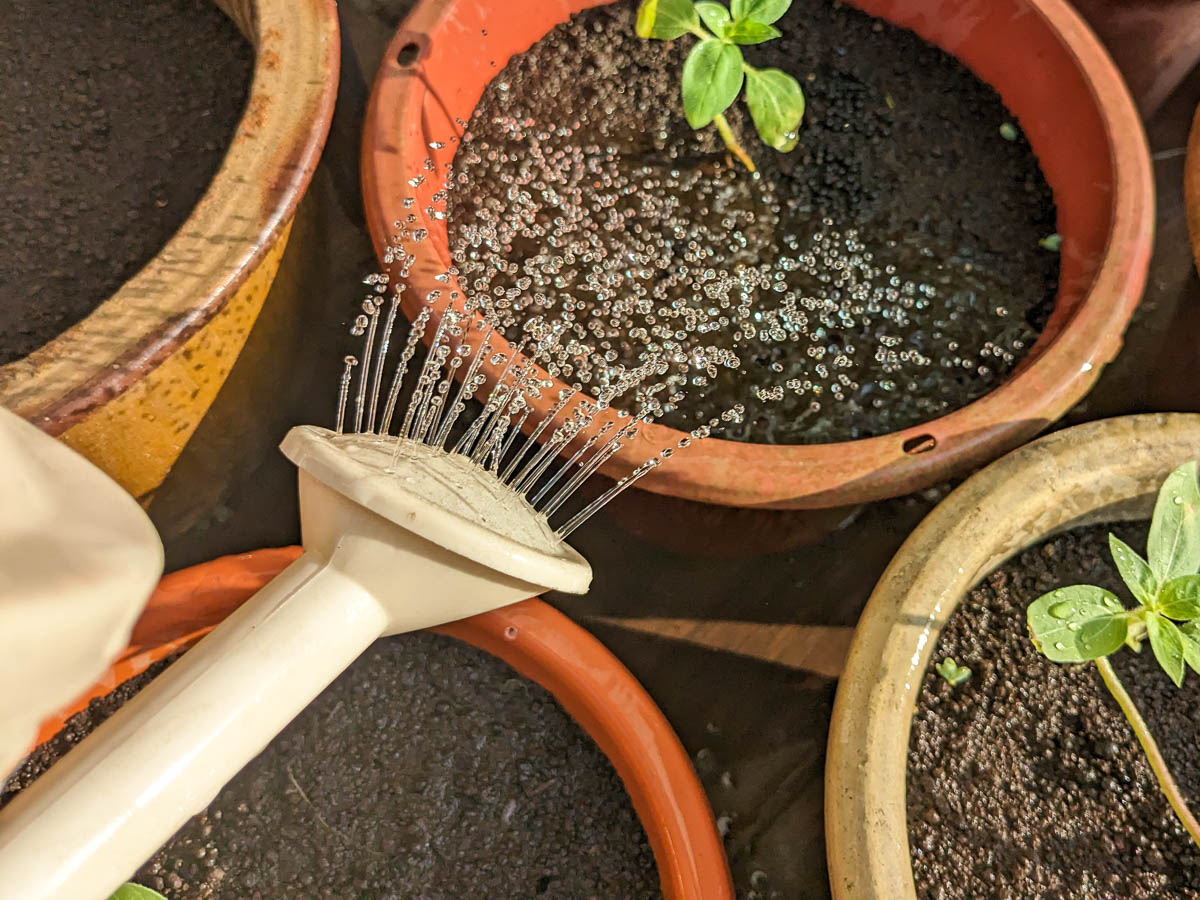Watering
.jpg)
Water is essential for plant growth. However, the species of plant, the kind of soil and the surrounding environment will affect how your plant takes up water. Both overwatered and underwatered plants will show signs of wilting, but for very different reasons.
Overwatering

Overwatering refers the act of watering so much that water is unable to drain away from a plant's soil after 24 hours. This results in the soil becoming waterlogged, in which there is so much water that there no longer is oxygen for the roots to breathe. Overwatered plants show signs of wilting because of root rot, in which a plant's roots will decay due to a lack of oxygen, resulting in the plant being unable to take up water, and thus wilting. Their leaves and stems may feel soft and mushy, and the plant will drop flowers, fruits, and older leaves.
The best way to prevent overwatering is to ensure that your soil and pots drain well, and to only water when the soil is dry.
Overwatering plants is more common in the tropics, as the high humidity and regular rainfall makes it such that soil will take longer to dry out. Overwatering is also generally more fatal than underwatering plants. When in doubt, water less!
Plants prone to overwatering include:
- African Violet (Streptocarpus ionanthus)
- Chives (Allium tuberosum)
- Flame Violet (Episcia cupreata)
- Indian Borage (Coleus amboinicus)
- Snake Plant (Dracaena triasciata)
Underwatering
.jpg)
Underwatering is a result of a lack of water, either due to an inadequate watering schedule or because the soil is too well-draining and does not have enough water for a plant to grow well. Underwatered plants will wilt because there is not enough internal water pressure to keep the stems or leaves firm. They may also appear stunted or weak, and their lower or older leaves will turn yellow and drop off. Their leaves may also feel crispy. Underwatered plants generally bounce back quickly after being watered.

Plants that are underwatered or inconsistantly watered for a long time may have the tips of their leaves dry out, leaving a brown dry spot. Take note that this is a general symptom of a lack of water, and may also be indicative of a plant being root-bound.
Plants that naturally grow in waterlogged soil, have climbing or soft stems, or very large and soft leaves are more likely to suffer from underwatering as they naturally lose more water throughout the day. Exposing your plant to many hours of direct sunlight, having an inconsistent watering schedule, and using very well-draining soil mixes will sometimes result in underwatering.
Plants prone to underwatering include:
- Cucumber (Cucumis sativus)
- Laksa (Persicaria ordorata)
- Lettuce (Lactuca sativa)
- Smooth Loofah (Luffa aegyptiaca)
- Spearmint (Mentha spicata)
How do I water perfectly?
.jpg)
The best way to keep your plant perfectly watered is to use a well-draining soil mix with lots of organic matter. Organic matter will keep the soil moist, while allowing excess water to drain away, preventing waterlogging and root rot.
Soil should ideally be watered when the top 5cm feels dry. Touching the soil is the best way to gauge this, and most gardeners use a chopstick or their finger to check. If the plant is in a pot, you can also weigh it just after watering to see how heavy it is when the soil is moist and compare its weight to when its dry.
Having a regular watering schedule to keep the soil consistently moist is also key. Regularly checking your soil will help you understand how fast it dries out, and then decide if you need to adjust your watering schedule. Do not blindly water without seeing whether the soil is dry!

Most gardeners use watering cans or hoses to water their plants. It is good practice to have a watering attachment like a rose for a watering can or a nozzle for a hose to break the water into a fine spray, which is gentler on the roots and stops large chunks of soil from being washed away. Aim to get water mostly on the soil, as stray water droplets on leaves can encourage the growth of fungi and other pathogens, particularly when the weather is humid.
Plants in containers with drainage holes can also be watered via bottom watering. This is a good way to keep the soil moist for a longer time, reducing the regularity of watering needed. However, because the containers need to be put in a basin of water, it is usually recommended only for smaller plants.

